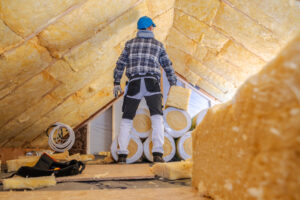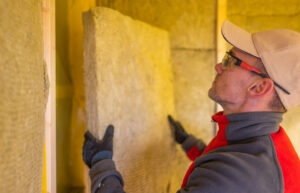Due to current climate changes, it makes sense to be eco-conscious. As part of pushing for sustainable solutions, the insulation industry is also encouraging eco-friendly techniques.
These options are now being considered because they ensure maximum energy efficiency and push for environmental responsibility in construction.
As a homeowner looking to enjoy the full benefits of insulation while also reducing your ecological footprint, it makes sense to consider environmentally responsible options.
Going this route ensures that you are able to achieve cozy living while also supporting a healthier living environment.

Insulation Installation done right!
This article looks at green-options available, explaining the many benefits and considerations you have to pay attention to strike a perfect balance between comfort, cost, and environmental effects.
Understanding Eco-Conscious Choices
It entails the use of a variety of resources that are sustainably sourced, and are energy efficient and safe for providing good indoor air quality. Unlike conventional options, which contain harmful chemicals and contribute to environmental degradation, eco-conscious alternatives are usually made from renewable or recycled resources. Resources that are commonly implemented include cellulose, cotton, and natural fibers like wool and hemp. These options are incredible because they not only provide thermal resistance but also contribute to better indoor air quality and less environmental impact. By going for such options, homeowners are able to minimize carbon footprints and enhance coziness and health of their living spaces.
Benefits of Climate Responsible Options
Energy Efficiency
As aforementioned, some resources that you can consider include cellulose, cotton, and natural fibers. The reasoning behind this is that they have higher R-values, which means better superior thermal resistance compared to traditional shielding. This means that they are able to prevent heat transfer while also keeping your home warmer in winter and cooler in summer. Due to this ability, homeowners do not have to spend a lot of money on their heating and cooling systems. This results to significant energy savings over time. By reducing the use of energy, these options contribute to a reduction in greenhouse gas emissions, meaning lesser impact on the environment.
Comfort
Another benefit that you get from environmentally responsible shielding is enhanced coziness. This comes about because it helps create a stable and pleasant environment all year-round. This reduces drafts and temperature fluctuations. The elements used not only offer incredible thermal performance but also help to manage the humidity levels. The result from this is a cozy living environment. In addition, many options offer sound-dampening qualities, reducing noise pollution from outside and between rooms. This level of coziness is quite useful because it is the only way to ensure that you fully enjoy your living space. Overall, taking up this kind of shielding promotes a cozy and inviting atmosphere, enabling you as the homeowner to lead a high-quality life.
Environmental Impact
By using the right kind of materials, you can be able to dramatically reduce carbon footprint and contribute to a more sustainable future. Components such as hemp and wool are biodegradable and non-toxic meaning that they are able to reduce the effect on the environment and hence promote a healthier planet. In addition to this, the production of these components involves lower energy consumption, compared to conventional elements. This further reduces greenhouse gas emissions. By boosting efficiency in buildings, environmentally responsible cushioning not only minimizes over-reliance on fossil fuels but also helps to mitigate climate change. Ultimately, taking this route is a proactive step towards preserving the natural environment and protect the environment for future generations.
Cost Considerations
Low-impact cushioning components are definitely pricier than traditional elements when looking at the initial price. However, this should not be the case when doing your calculations. Instead, you need to look at long-term financial benefits. Cushioning substances like cellulose and wool provide superior energy efficiency, leading to significant savings on heating and cooling. In addition to this, these materials are durable and resistant to issues like pests and mold. This ability means that they heavily reduce maintenance expenses and need for future replacements.
Eco-friendly insulation presents a great solution for achieving a perfect balance between comfort, cost, and environmental impact. By going for sustainable materials, you can be able to improve energy efficiency, boost indoor air quality and create a more comfy living environment. Although the initial expense may be higher than that of conventional methods, the long-term expense savings will be way higher. As awareness of climate change and the benefits of sustainable solutions continues to grow, embracing low-impact options not only supports individual ease and price savings but also ensures a healthier planet.




